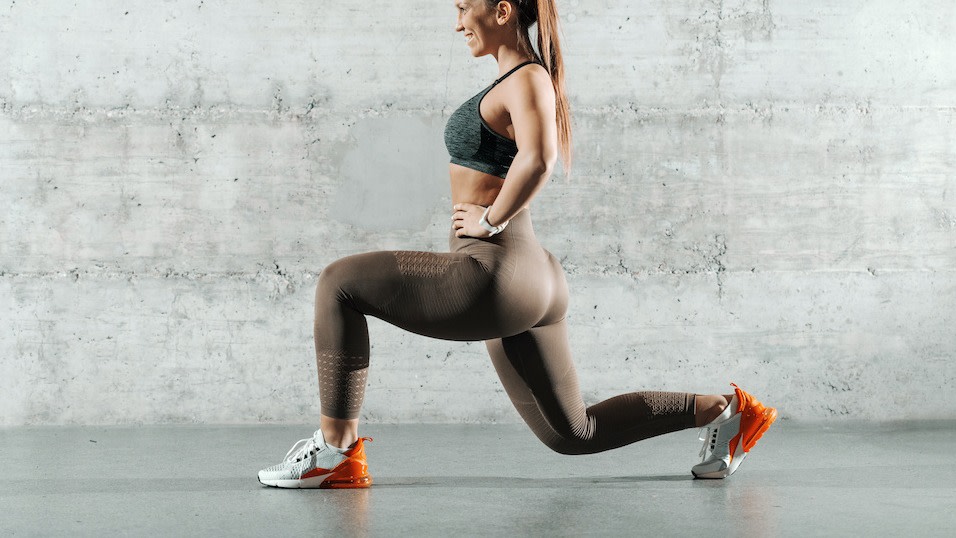Reverse Lunge Guide: How to Master Reverse Lunges
Written by MasterClass
Last updated: Sep 20, 2021 • 3 min read
If you’re looking for a convenient lower-body exercise, try reverse lunges.
Learn From the Best
What Is the Reverse Lunge?
The reverse lunge is a bodyweight and leg exercise that works muscle groups throughout your lower body. Perform reverse lunges by taking a step backwards, keeping your upper body aligned and your back straight. Lower yourself enough for your front leg to be at a 90-degree angle. With proper form, reverse lunges are one of the most accessible lunge variations you can use in your strength training program.
Reverse Lunges vs. Forward Lunges: 3 Differences
Although reverse lunges and forward lunges are similar, they differ in a few ways.
- Movement pattern: Lunging forward activates your front leg, while reverse lunges focus on your back leg.
- Muscles targeted: Both lunge variations target many of the same muscle groups in your lower body, but they prioritize different areas. Forward lunges emphasize the quadriceps on the front of your leg. In contrast, reverse lunges put special emphasis on the hamstrings and glutes.
- Difficulty level: Reverse lunges typically put less strain on your knees, making them an easier lower-body exercise than forward lunges. Start with a reverse lunge as a warm-up before doing a full forward lunge. If you want to add an additional challenge to your lunges, consider holding a kettlebell or a pair of dumbbells or placing a barbell on your upper back during the movement.
How to Do Reverse Lunges With Proper Form
For reverse lunges, begin with 2–3 sets of 10–15 repetitions on each side. Choose your sets and repetitions based on your ability to maintain good technique throughout all sets and repetitions.
- 1. Start by standing with your feet hip-width apart and a slight bend in your knees. Your shoulders should be directly over your hips with a neutral head and neck position. Your chin should remain tucked, as if you were holding an egg under your chin.
- 2. Evenly distribute your weight, and grip the floor with your feet to create a stable position.
- 3. Place your hands on the sides of your hips. Pre-tension your shoulders and hips, and engage your core. All repetitions should begin from this position.
- 4. While maintaining a neutral spine, take a step backward, and bend your hips, knees, and ankles. Lower your hips toward the floor until your back knee is an inch or two from the ground.
- 5. Your front foot should be neutral with your weight evenly distributed along the entire foot. Your front knee should be directly over your big toe. Your rear hip should be over your rear knee, with the ball of your foot on the ground and your heel lifted.
- 6. At the bottom of the lunge, both of your legs should be at 90 degrees. Your pelvis should be neutral as you reach the bottom of the movement. Imagine that your pelvis is a bucket filled with water and you’re attempting not to spill any of it.
- 7. Pause at the bottom of the movement.
- 8. To begin the upward movement, keep your chest high, and push your entire foot into the ground, using your glute and quad to push yourself back to an upright position. Emphasize pushing through your midfoot and heel while keeping your toes engaged.
- 9. Both legs should finish next to each other as you return to the starting position. At the end of each repetition, your shoulders should finish over the hips.
- 10. Repeat on the opposite side or the same side for your desired number of repetitions.
How to Work out Safely and Avoid Injury
If you have a previous or pre-existing health condition, consult your physician before beginning an exercise program. Proper exercise technique is essential to ensure the safety and effectiveness of an exercise program, but you may need to modify each exercise to attain optimal results based on your individual needs. Always select a weight that allows you to have full control of your body throughout the movement. When performing any exercise, pay close attention to your body, and stop immediately if you note pain or discomfort.
In order to see continual progress and build body strength, incorporate proper warm-ups, rest, and nutrition into your exercise program. Your results will ultimately be based on your ability to adequately recover from your workouts. Rest for 24 to 48 hours before training the same muscle groups to allow sufficient recovery.
Want to Dive Deeper Into Your Wellness Journey?
Throw on some athleisure, fire up a MasterClass Annual Membership, and get ready to sweat it out with exclusive instructional videos from Nike Master Trainer and GQ fitness specialist Joe Holder. Want to improve your cardiovascular endurance? Give Joe’s HIIT workout a go. Trying to get a little swole? He’s got a strength training workout for that. From fitness tips to nutrition hacks, Joe will have you feeling healthier in no time.
